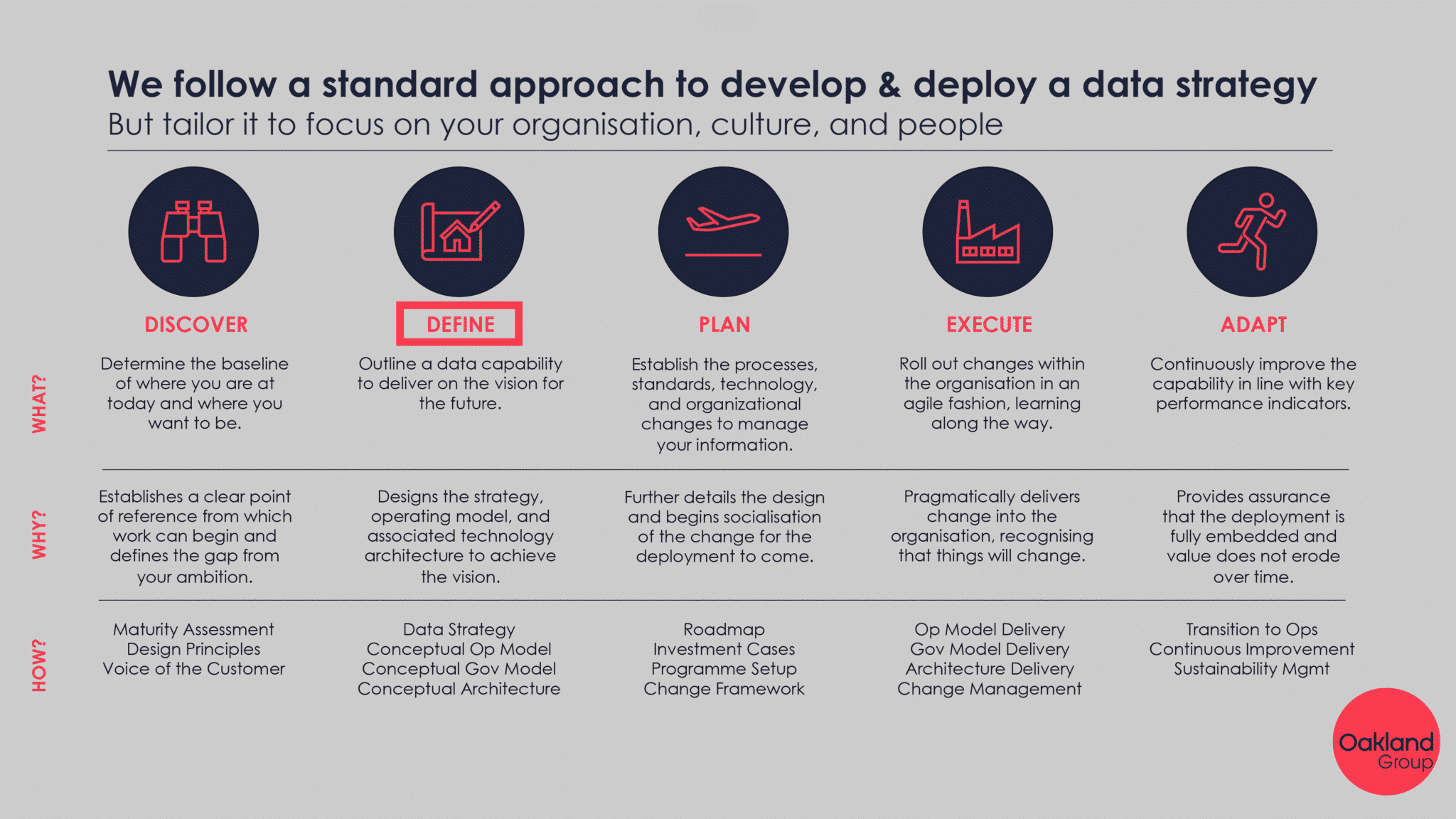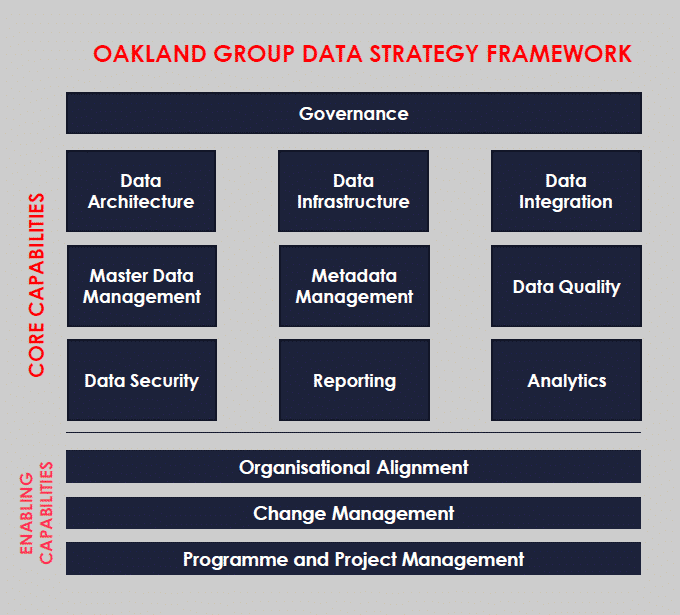Previously in our series on creating a data strategy, we discussed the importance of discovery and establishing a current state assessment.
This week, we’re exploring the next step in the data strategy journey – how to define the ideal future state for navigating your data strategy and determining the data capabilities required to get you there.

Validating the Needs of Internal Customers
The Define phase starts by confirming the needs of internal customers.
As a result of the discovery phase, you should now have some draft vision and design principles that we can validate and evolve with collaboration from the business and other communities.
There are many ways to achieve this, but one of the best ways we’ve found is by translating the ‘Vision Framework’ (developed during the Discovery phase) into a series of Critical Success Factors (CSFs).
Developing a [data] mission is not enough to ensure its implementation. There is a hidden ‘danger gap’ into which many organisations fall because they do not foster the skills needed to translate the mission through CSFs into the core processes and people capabilities.
Mapping out the needs of the internal stakeholders as a series of CSFs helps to prioritise and coordinate the execution of the data strategy.
For example, following discussions with internal sponsors, you may arrive at the following CSFs:
- We must deploy our staff on value-added tasks, instead of reactive, administrative ‘fire-fighting’
- We must have best-in-class customer experience and support metrics
- We must reduce the lead time of product go-to-market cycles
- We must deliver real-time stock analytics to front-line stores
- We must reduce the volume of first-year customer churn from first-bill errors
Your final list of CSFs should be an agreed balance of strategic and tactical issues. They should be clear enough that you’re able to identify the process and data improvements/changes required.
Establishing Data Capabilities and OKRs
Now that we understand the critical success factors, we can map out the underlying data and processes that will need to change or improve to execute the data strategy.
We can also define some ‘Objectives and Key Results’ (OKRs) to align with the Critical Success Factors determined earlier.
For example, if you wished to move staff allocation away from reactive complaint handling and administrative fire-fighting, towards value-added activities, we need to specify what that means as a clear objective and well-defined target result such as:
Target: 50% reduction in reactive defect-related administration in year one.
We now have some measurable success criteria to track the achievement of that CSF/Objective/Goal.
As we examine the CSFs and OKRs with clients, there are clear data capabilities that come through and need to be developed.
For example, we’re working with a client at the moment who have advised that all new data platform implementations must be cloud-based (on Azure). Therefore, any future data capabilities and architecture designs must take this into account.
We also know that some of the data is regulated, therefore we’re introducing a phased plan to introduce greater data governance and assurance controls as part of the data strategy. But all of these capabilities will be developed with the end-customer in mind – our goal is self-reliance for the client.
Core Capabilities vs Enabling Capabilities
It’s important to draw a distinction between the different categories of data capabilities required to deliver long-term data strategy change.
The diagram below helps to distinguish the different capability areas:

The Oakland information management framework has been created following years of experience helping clients solve their toughest data challenges and improve businesses worldwide.
There are three core components:
- Governance: The processes, people, management systems, and methods by which information is controlled in the organisation
- Core Capabilities: The foundational components of information management within an organisation
- Enabling Capabilities: Components that help to define, implement, and sustain information management capability in an organisation
To create a successful data strategy, you need all three capabilities working together to create sustained, long-term change.
Defining the Operating Model, Governance Model and Future-State Architecture
Now that we have a clearer idea of the capabilities required to support the data strategy, we can map out the target operating model to support each capability shift.
The key is to make your operating model simple to communicate during the data strategy formation. For example, here is an example from an earlier engagement:

We typically create a more detailed operating model as the data strategy moves into later execution phases.
For the future state model, we identify all the major capabilities/components that will require change as a result of the data strategy initiative. Here is an example from a past client future state modelling workshop:

These types of models are designed to communicate ‘big picture’ architecture shifts without overwhelming the business, technical and data communities with excessive detail that is better placed in underlying architecture and framework documentation.
Next Steps
Once we have defined the capabilities and supporting models, the next stage is to enter into a more detailed planning phase that will determine the funding requirements for executing the data strategy program.

